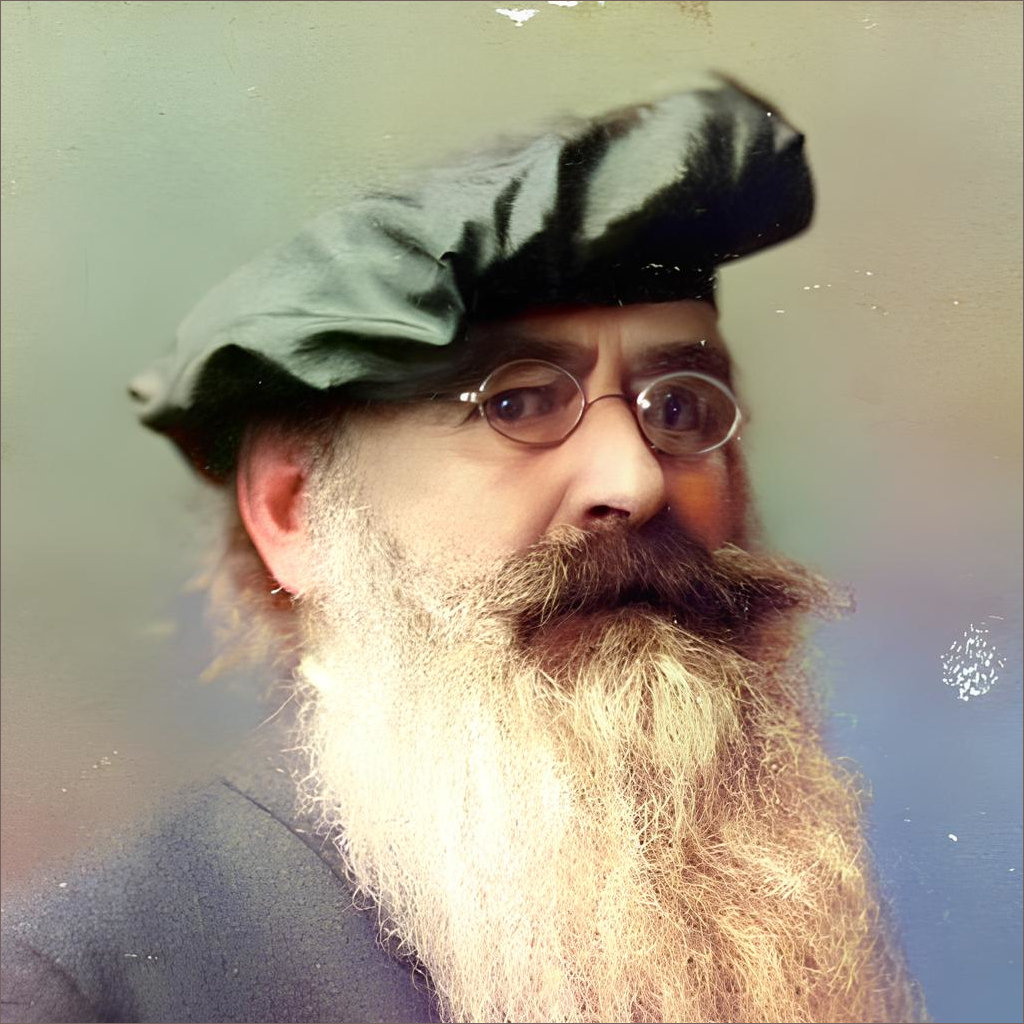Guido von List
Occultist

Guido von List was an Austrian author, athleticist and occultist whose ideas played a significant role in the development of Germanic paganism and the esoteric movement known as Ariosophy during the late 19th and early 20th centuries.
Due to his influence on various movements in Austria, Bavaria and the wider Germanic world, List is now often reviled as the spiritual father of Nazism, which is a curious admission given that the same individuals tend to claim through the other side of their mouth that NS was a Christian-affiliated movement.
In particular, his legacy forged a major shift between primitive, superficial attempts at pagan worship to certain methods that we now use today prolifically in the ToZ, such as the use of the Rune in all spheres of magic.
EARLY LIFE
He was born in Vienna to a German-speaking family on the 5th of October 1848, thus Guido Karl Anton List grew up in a city that was the capital of the Austro-Hungarian Empire. List’s family were wealthy burghers who had a sustained enterprise in leather products. From an early age, List displayed an intense fascination with mythology and nature, two curiosities that would shape his later pursuit of knowledge.
Von List was intrigued by the majesty of the natural world surrounding him, believing that it alone held many secrets about the divine. Endlessly he went to the verdant forests of Lower Austria that his family took frequent travails to and sought out the great secrets of nature therein that he believed personified divinity. He abandoned his Roman Catholic belief system when still a child, reviling it as a worthless system of fakery.
As a young adult, he became the secretary of Austria’s foremost hiking organization, the Austrian Alpine Association. He was also influenced by the growing tide of German nationalism and the budding Romantic fascination with the ancient Teutonic past which was sweeping through European intellectual circles at the time, and he made many acquaintances among the aristocracy and among industrialists.
Much of von List’s early career was spent as a journalist and novelist. He wrote prolifically for several German-language magazines of a nationalist bent, His writings covered a wide array of topics, including travel, nature, art and local history. Ethnology was one of his major concerns and he created pioneering studies of Austrian folk customs and regional traditions. but he was increasingly drawn to esoteric themes, particularly those connected to the ancient Germanic peoples, the ancestors of the Germans who he believed were a common font for each and every tradition found from the Danube to the Elbe and the Rhine.
He was known to have written three historical novels and four plays. After the publishing of his most successful historical novel, Carnutum, he attracted the attention of the wealthy industrialist and theosophist Friedrich Wannieck, who increasingly patronized his endeavors on the basis of a strong friendship that developed between the two men in correspondence.
He also continued his practice of gymnastics and athletics, which influenced his lifelong membership of the German Gymnastic League. Much of his belief system was oriented around the sustenance and health of the body, which he believed was also a key Germanic precept.
Von List became increasingly radical with his German nationalist politics and believed that the society of his time was controlled by an international cabal of freemasonic elements who were attempting to turn the Empire into a vehicle for cosmopolitanism and decadence.
ARIOSOPHY
Guido von List’s most lasting worldview was the foundation of Ariosophy. This was an esoteric doctrine blending Germanic paganism, the lore of the Runes, and occult belief systems. List claimed to have rediscovered ancient secrets of the Aryan peoples, which he interpreted through his readings of Norse mythology. Central to his thought was the belief that there once existed a primordial Indo-European religion common to all of the ancient cultures of Europe that had been deliberately suppressed by Christianity and other foreign influences.

Von List considered Aryan society to have been oriented around the worship of the sun and that the Gods and Daemons were legendary ancestor spirits who kept watch over humanity. He played a major part in popularizing the Swastika in the late 19th century as a symbol of solar power.
A major aspect of Ariosophy in his terms is a Platonic system where the fallen nature of man can only access the divine through contemplation and exists in order to complete the works of God, returning to the source after many incarnations instill enough wisdom to return to the source and establish a heavenly utopia on earth.
In the book The Invincible, in 1898, he introduced the idea that the figure of Wotan constitutes the center of the universe and that many aspects of ancient Viking texts are codes that mythologically impart ritualistic access to this core God who sees and rules all. Von List also argued on the matters of original Sin, fate and many other mystical concepts of cause-and-effect that he gleaned from his own practice of meditating.
Quote from The Armanen Society of the Ancient Germanics1:
The fate is the fate of the human being. This fate takes place inexorably; there is no atonementless forgiveness of sins, just as there is no eternal damnation, since all individualities are inseparable parts of the Godhead itself, and must return at the end of all times to this, with which they have been already one since all beginning.
RUNIC SYSTEM
A temporary eleven-month episode of blindness in one eye struck him in 1902 after a cataract operation, and after this strangely evocative event, von List began to obsessively study the ancient Runes.
List’s key works, such as "Das Geheimnis der Runen" ("The Secret of the Runes")2, published in 1908, outlined his interpretations of the Runic alphabet and its hidden meanings. He argued decisively that Runes were not simply letters but spiritual symbols containing arcane wisdom and could be used as part of a magickal system. He developed his own "Armanen Runes" system, claiming it was a reconstruction of the original runic knowledge of the ancient German priest-kings, whom he called “the Armanen”.
He believed that the basic teachings of the mysterious one-eyed God of the Germans were found in the Runes, and that in order to find them, cross-referencing Norse works such as the Havamal was the solution. Increasingly, von List interpreted Germanic mythology in a Platonic direction, and claimed that many of the most famous occultists across history such as Giordano Bruno actually developed secret occult practices linked with the Runes.
Von List encouraged meditating upon the Runes directly in a state of trance to ascertain truths about the cosmos and the truth about reality, as each Rune was said to contain some sort of cosmic vibration. He also believed that looking into them in this way activated clairvoyant abilities. Some of his ideas were influenced directly by Platonic philosophy.
Through this meditation, he uncovered many of the mystical meanings behind the symbols, such as the association of Ansuz or Oss with the power to overcome tyranny. Much of his findings were published in Die Gnosis magazine, a Theosophical tract. Additionally, his ideas were highly influential on later practitioners of runic magic who further developed systems that explicitly involved runic exercises involving chanting, in alignment with the ancient Norse practice of galdr.
His followers also encouraged ‘rune stances’ (Runestellungen) that encourage mirroring the shape of the Runes in the body, which is known now to make workings more powerful. Being in the shape of Sig or Sowilo, for example, was said to draw in solar energy.
The popularity of his occult ideas convinced a large amount of upper and middle-class scions to support him and to create a society in his name called the Guido von List Society in 1908, which resulted in von List himself creating the mystical society of the High Armanen Order in 1911 with a specific structure. Members included influential figures from the worlds of publishing, industrialists, scions of the art world and even high profile members of early political movements in Vienna.
HIS LEGACY
Von List used the occasion of the First World War to embark on a campaign of nationalist vigor, believing that the generation surviving the war would create a new empire that would dominate Europe and overturn the social order in every part of the continent.
By 1915, his society had hundreds of members and courted high society. Von List, however, grew increasingly weak, and seemed to suffer extreme bad health as soon as he embarked on a project linking the Runes with the Kabbalah system, a work that was never completed nor even published. After a long journey from Vienna to a small town outside of Berlin, von List became seriously ill with a lung infection and passed away on the 17th of May 1919.
Von List was highly regarded in revolutionary circles after the First World War; he provided an intellectual impetus for the growth of societies in Austria and Bavaria such as the Thule Society which was an offshoot of the Germanic Order 4, an organization that admired von List. The occult group came together in Munich and was known to promote his works.
Additionally, many of his writings became influential in neopagan and NS circles in the 1970s, particularly in America, where the neopagan author Edred Thorsson brought a new dimension to von List's teachings and which provided a basis for the use of the Runes by the Temple of Zeus.5
BIBLIOGRAPHY
1The Armanen Sociey of the Ancient Germanics, Guido von List
2The Secret of the Runes, Guido von List
3The Invincible, Guido von List
4The Occult Roots of Nazism: Secret Aryan Cults and Their Influence on Nazi Ideology, Nicholas Goodrick-Clarke
5Futhark: A Handbook of Rune Magic, Edred Thorsson
CREDIT:
Karnonnos [SG]

 አማርኛ
አማርኛ العربية
العربية বাংলা
বাংলা Български
Български 中文
中文 Čeština
Čeština Dansk
Dansk Deutsch
Deutsch Eesti
Eesti Ελληνικά
Ελληνικά Español
Español Français
Français हिन्दी
हिन्दी Hrvatski
Hrvatski IsiZulu
IsiZulu Italiano
Italiano 日本語
日本語 Kiswahili
Kiswahili Magyar
Magyar Македонски
Македонски नेपाली
नेपाली Nederlands
Nederlands فارسی
فارسی Polski
Polski Português
Português Română
Română Русский
Русский Slovenščina
Slovenščina Suomi
Suomi Svenska
Svenska Tagalog
Tagalog Türkçe
Türkçe